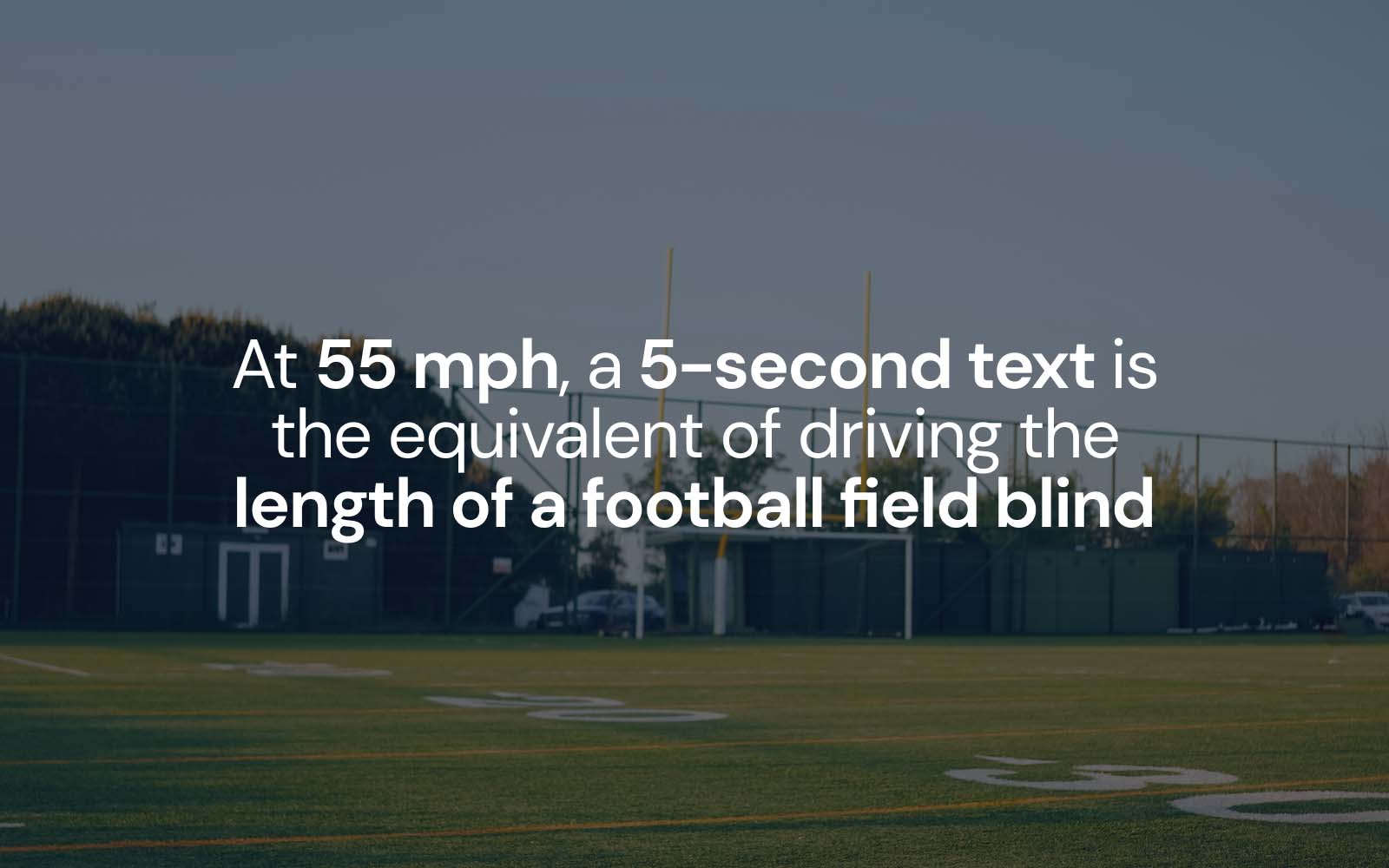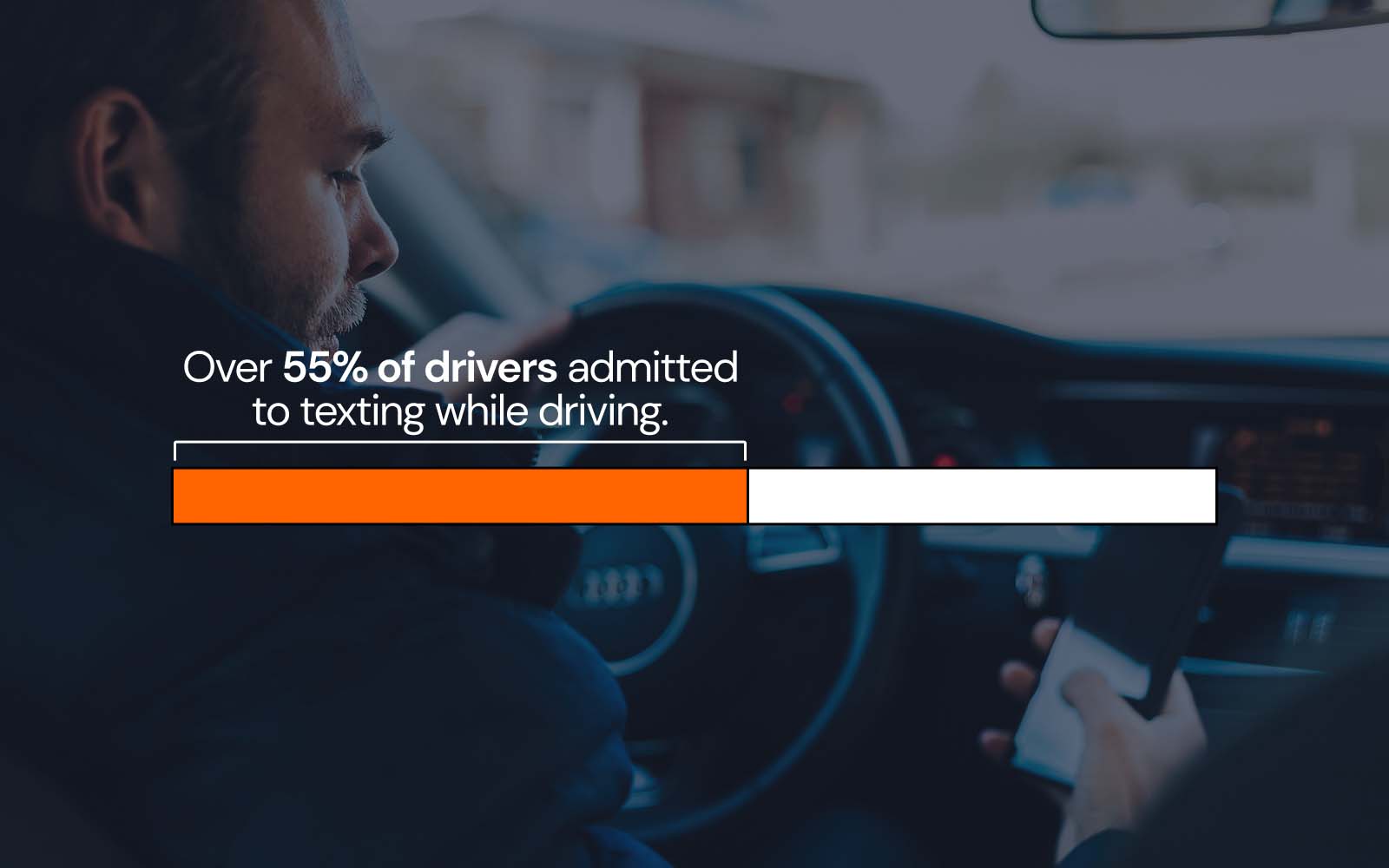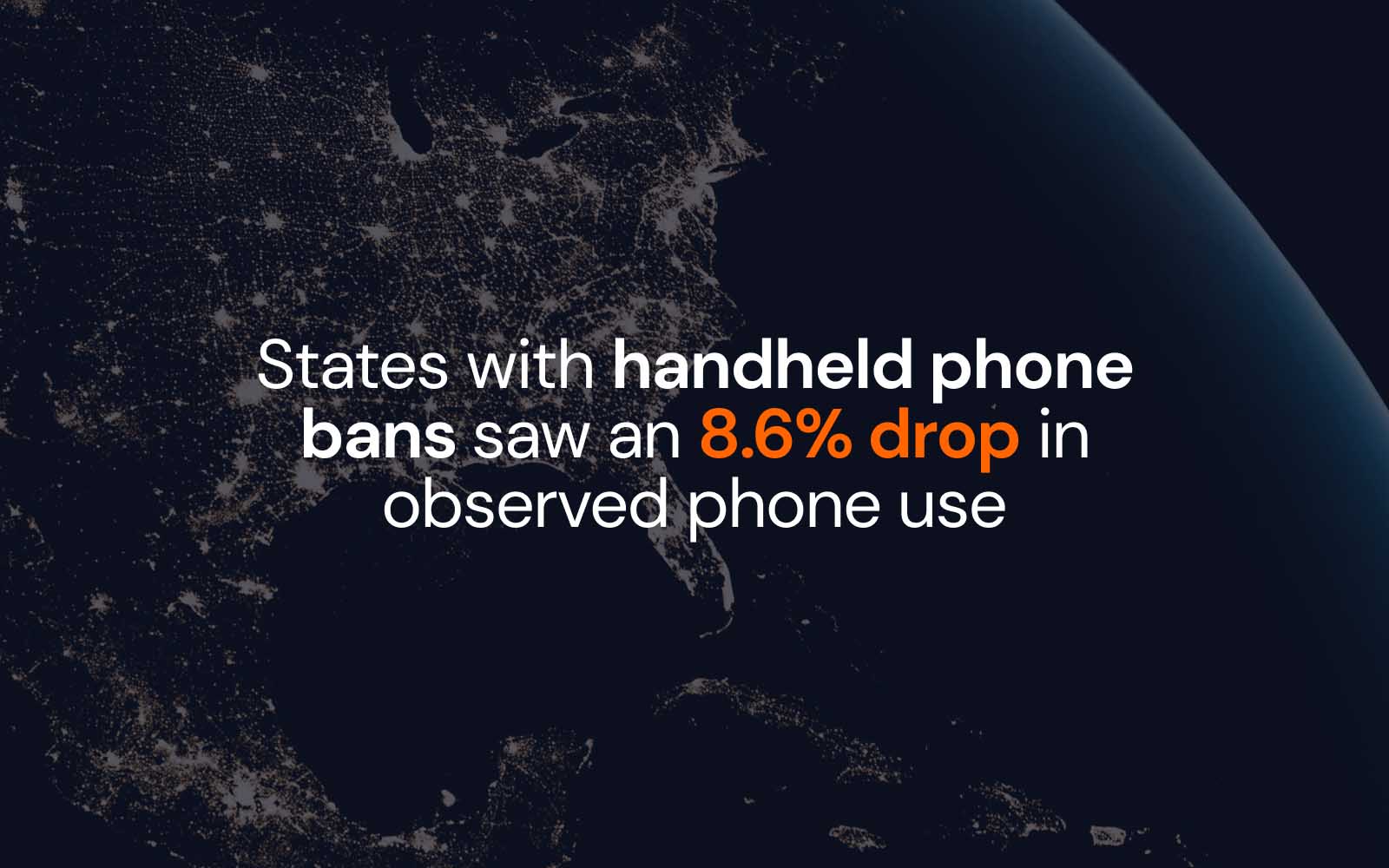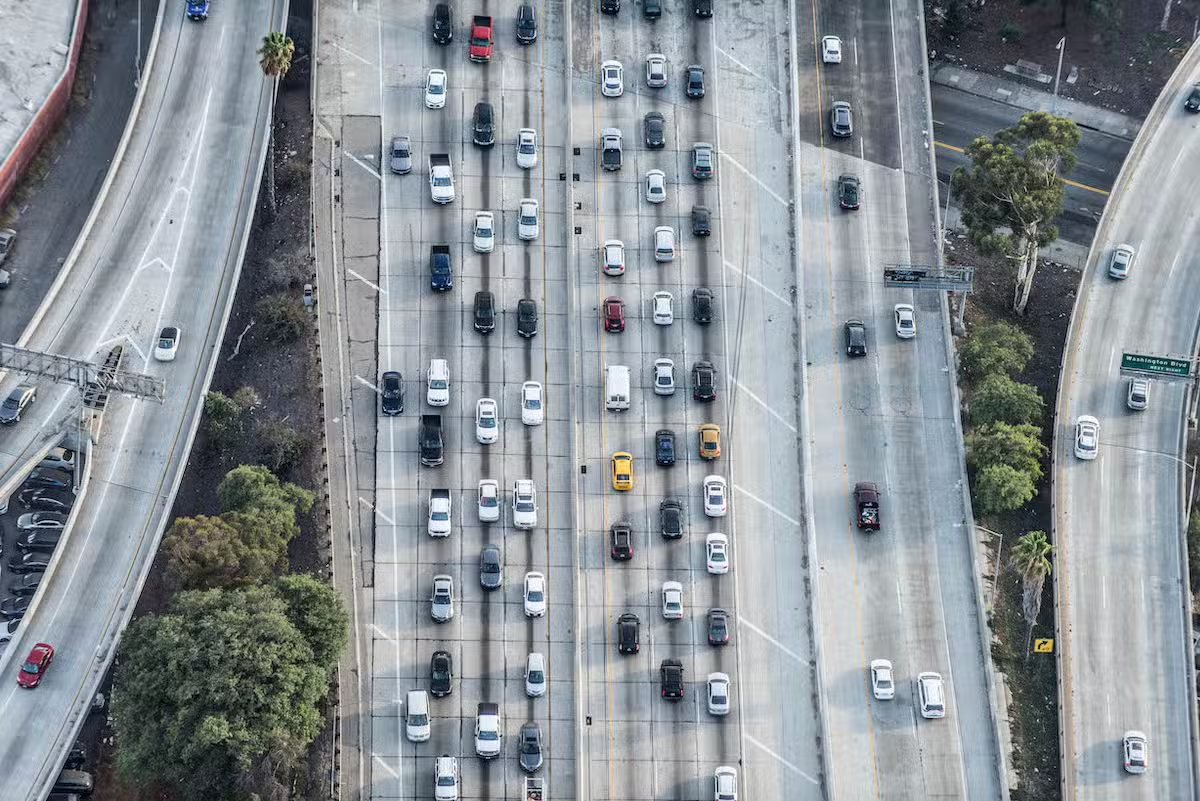How many people are injured or killed by distracted driving each year?
Distracted driving is responsible for thousands of deaths and hundreds of thousands of injuries in the U.S. annually. In 2023, an estimated 3,275 people were killed and 324,819 were injured in crashes involving distracted drivers, according to the National Highway Traffic Safety Administration (NHTSA). These numbers represent nearly 9 fatalities and 890 injuries every day due to driver inattention.
Distraction-related fatalities account for approximately 8% of all traffic deaths in the U.S., making distracted driving a persistent and deadly hazard on American roads.

What counts as distracted driving?
Distracted driving refers to any activity that diverts a driver’s attention from the road. This includes actions such as:
- Texting or emailing
- Talking on the phone (even hands-free)
- Eating and drinking
- Adjusting the GPS or stereo
- Talking to passengers
Of these, texting is the most dangerous form of distraction, because it combines visual, manual, and cognitive distractions all at once.
How dangerous is texting while driving?
Texting while driving dramatically increases crash risk. At 55 mph, reading or sendin a text takes your eyes off the road for 5 seconds, which is equivalent to driving the length of a football field blindfolded.

A study from the Virginia Tech Transportation Institute found that texting while driving increases crash risk by 23 times. This makes it more dangerous than dialing a phone, talking to passengers, or adjusting the radio.
How many people are using phones while driving?
According to 2023 data from the NHTSA, over 326,000 drivers were using handheld phones at any given daylight moment. That means hundreds of thousands of drivers are actively distracted at any point during the day.
These figures come from observational studies, which may even underreport the issue—since many drivers hide their behavior. Surveys show the problem is worse than what’s recorded. For example, a 2024 National Safety Council (NSC) study found that over 55% of drivers admitted to texting while driving.

Which age group is most at risk for distracted driving?
Young drivers are the most at-risk group for distracted driving. In 2023, drivers undr age 30 were involved in more than 50% of distraction-related fatal crashes. Teens and young adults are significantly more likely to text, use social media, or take videos while driving.

The risk is highest among drivers aged 16–24, who have grown up with smartphones and are more prone to multitasking behind the wheel. Efforts to reduce distraction often focus on this group with high school campaigns, license restrictions, and targeted enforcement.
Is distracted driving as dangerous as drunk driving?
Distracted driving and drunk driving are both deadly, but in different ways. Alcohol impairs physical coordination and reaction time, while distraction removes the driver’s attention from the road entirely. Studies show that texting while driving can delay reaction time more than driving at the legal alcohol limit.
While drunk driving leads to more fatalities overall (around 13,000 per year), the share of fatal crashes involving distraction remains alarmingly high at 8%, and the behavior is far more common.
Distracted driving is also more difficult to detect and enforce than impaired driving, which means many crashes may go unclassified or underreported.
What laws exist to prevent distracted driving?
As of 2025:
- 48 states have banned texting while driving.
- 27 states have enacted handheld phone bans, requiring drivers to use hands-free devices.
- All states prohibit phone use by novice or teen drivers.
These laws have shown effectiveness. For example, states with handheld phone bans saw an 8.6% drop in observed phone use, according to a recent IIHS study.

However, enforcement remains a challenge. Many drivers are not deterred by existing penalties, which typically involve small fines or warnings. In 2024, fewer than 15% of distracted driving citations led to court appearances or point penalties.
What role does technology play in distracted driving?
Smartphones are the most common source of distraction, but vehicle infotainment systems also contribute to the problem. According to the AAA Foundation, some built-in systems require up to 40 seconds of driver attention to complete simple tasks like entering a destination or changing playlists.
Many newer vehicles now include safety features like:
- Lane-departure warnings
- Forward-collision alerts
- Driver attention monitoring
Despite these innovations, there’s concern that drivers become over-reliant on tech and pay even less attention to the road. Additionally, voice-activated systems often provide a false sense of safety, as cognitive distraction still reduces situational awareness.
When are distraction-related crashes most likely to occur?
Distracted driving crashes peak during:
- Daylight hours (12 p.m. to 6 p.m.) when phone use is highest.
- Weekdays, especially during commuting times.
- Spring and summer months, when road volume increases and more young drivers are on the road.
While crashes involving alcohol tend to peak late at night or on weekends, distraction-related crashes happen more often during normal work and school hours. This pattern suggests that distracted driving is often linked to everyday habits, such as checking emails or replying to texts en route.
What can drivers do to avoid distracted driving?
To reduce distracted driving risk, follow these evidence-based steps:
- Silence your phone or use “Do Not Disturb” mode while driving.
- Use built-in safety features like Apple CarPlay or Android Auto hands-free modes.
- Pre-set navigation and playlists before you begin driving.
- Pull over if you need to respond to messages or emails.
- Educate teen drivers and model safe driving behavior.
- Encourage passengers to help with navigation and texting if needed.
Parents, in particular, play a crucial role in preventing distracted driving among teens. Studies show that teens are less likely to text and drive when parents model safe driving behavior.
Conclusion: Small Distractions, Deadly Consequences
Distracted driving is a public safety crisis. In 2023 alone, 3,275 lives were lost to distracted driving, and over 324,000 people were injured. Texting while driving increases crash risk by 23 times, and yet, more than 55% of drivers admit to doing it.

Laws and technology can help, but changing behavior is critical. Drivers must treat their phones as serious safety hazards and not everyday conveniences when they’re behind the wheel. Legal advocates, lawmakers, and public safety organizations must continue to prioritize enforcement, education, and design changes that limit distraction and save lives.
If you were injured in a crash caused by a distracted driver, a
can help you pursue compensation and navigate the legal process.











